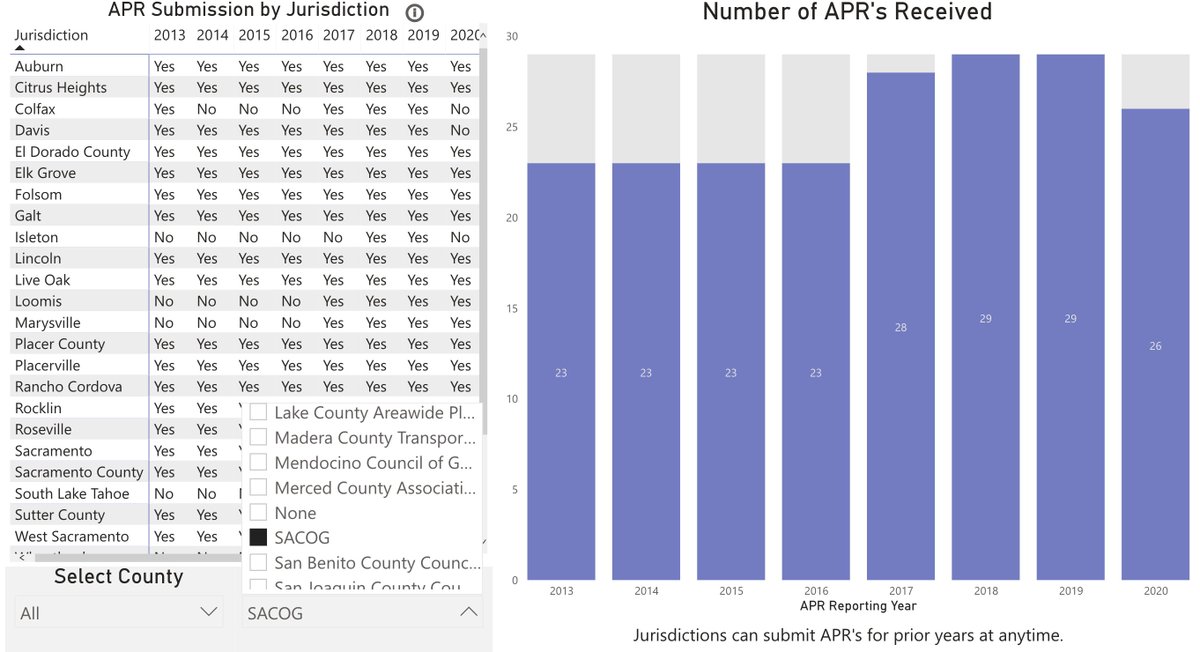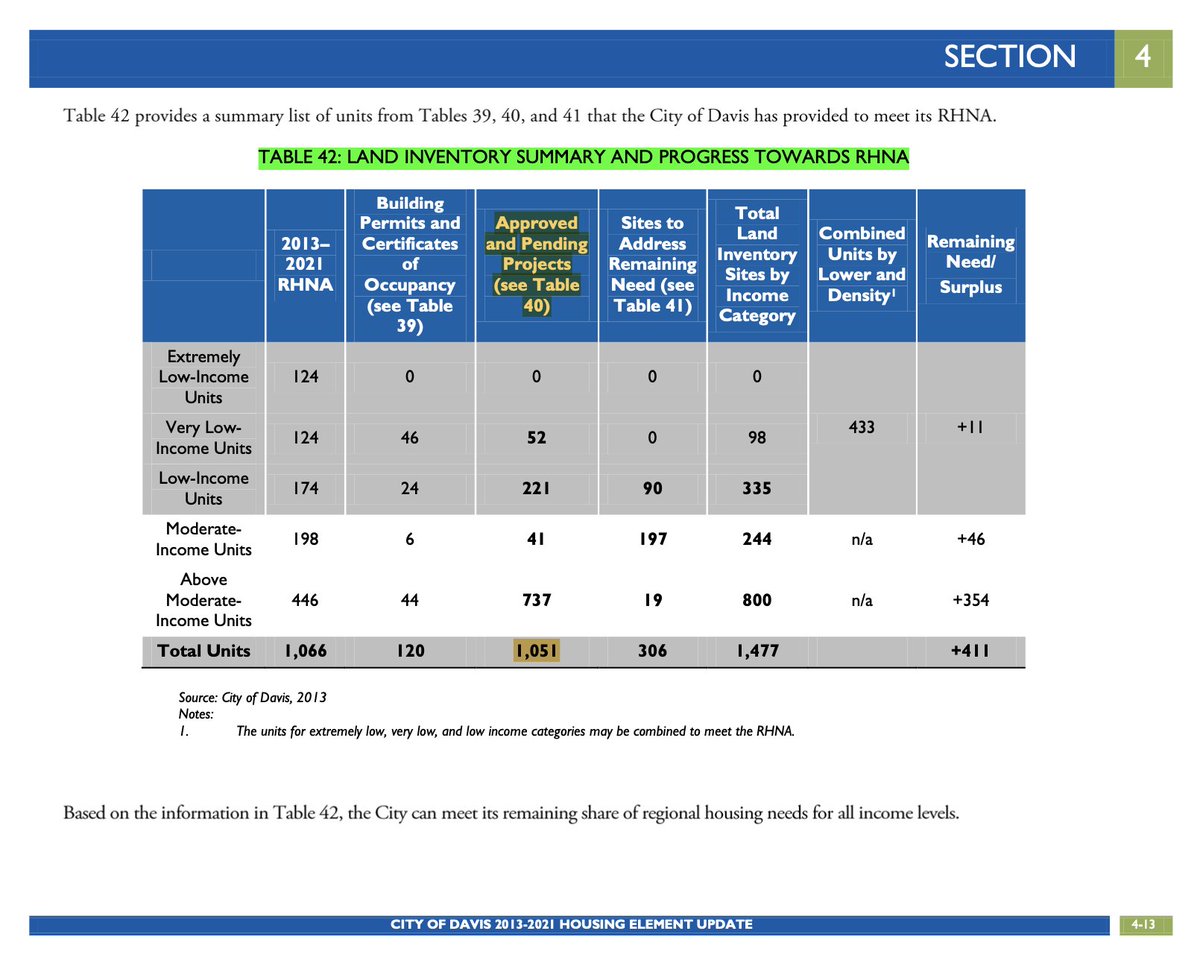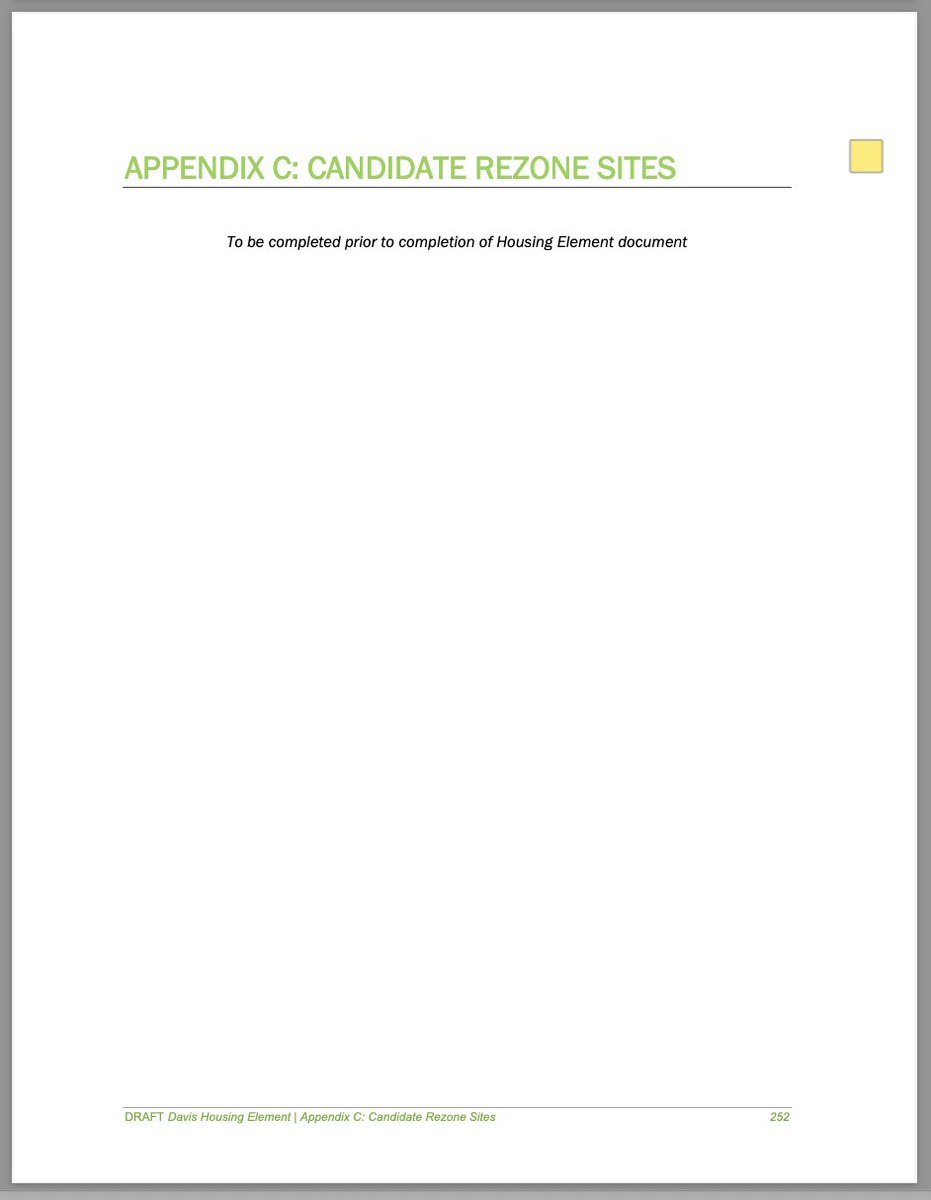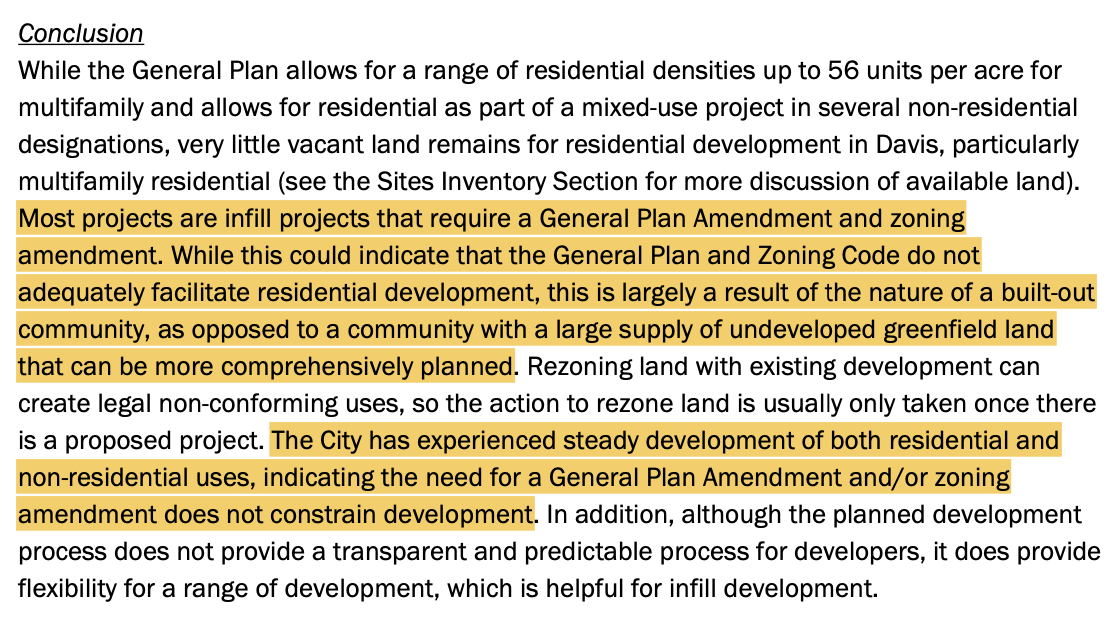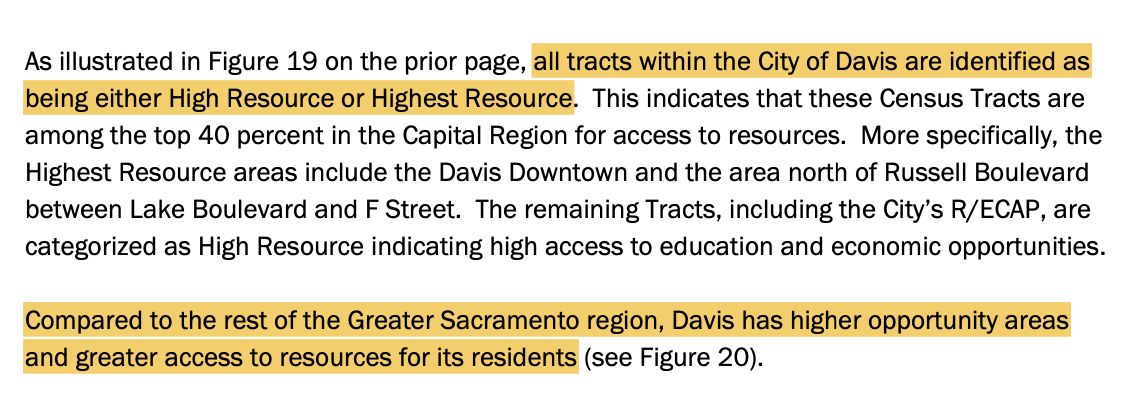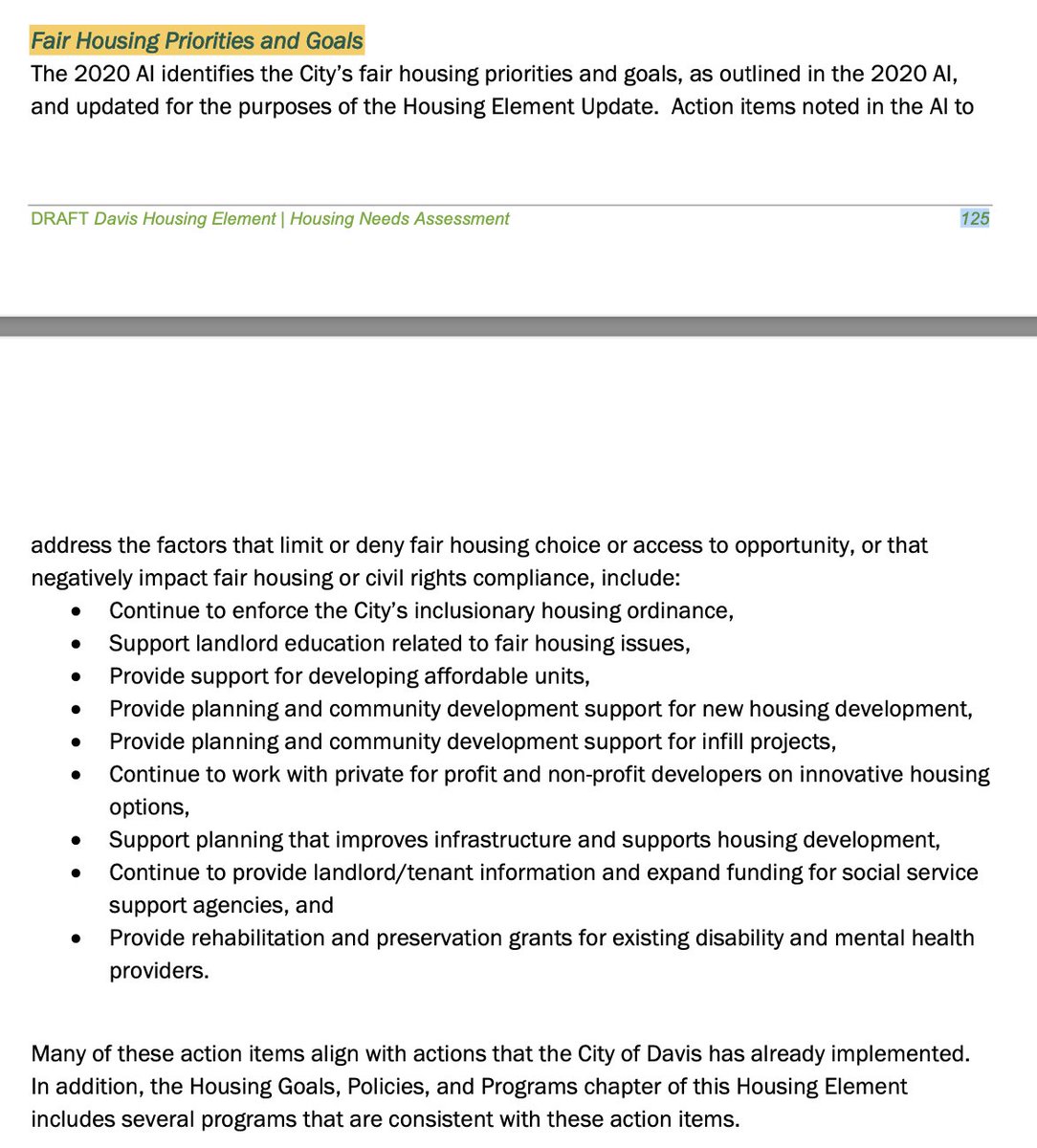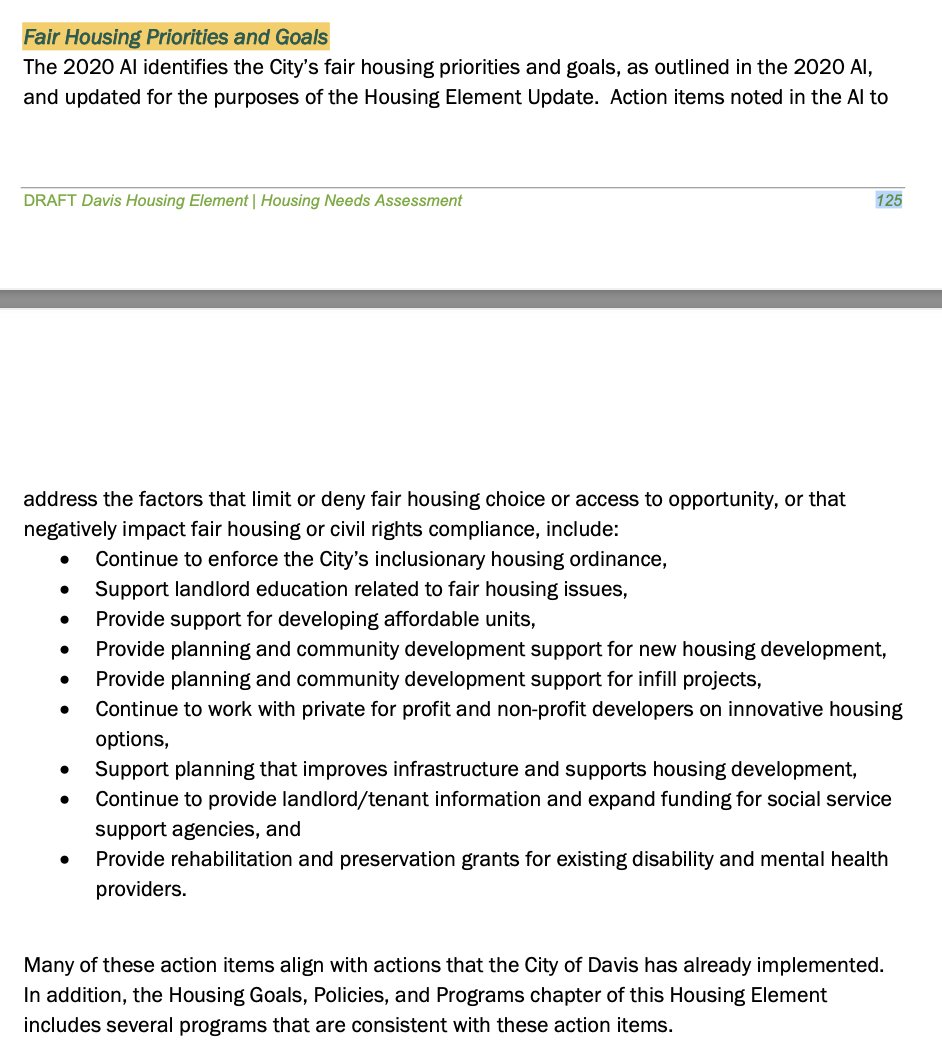Want (another) lesson in how CA cities abuse the state& #39;s Housing Element Law? Hard to do better than the place I teach, Davis, which just released its draft housing element for 2021-29. 1/n
https://www.cityofdavis.org/city-hall/community-development-and-sustainability/planning-and-zoning/housing-element-update-2021-2029">https://www.cityofdavis.org/city-hall...
https://www.cityofdavis.org/city-hall/community-development-and-sustainability/planning-and-zoning/housing-element-update-2021-2029">https://www.cityofdavis.org/city-hall...
Context: Davis is an affluent college town, and a bedroom community for Sacramento& #39;s well-educated elite. By commuter rail, it& #39;s 15 min to downtown Sac, & 1.25 - 2 hrs to Bay Area destinations. 2/n
As one might expect given its demographics, Davis is also NIMBY central, with a passel of voter-adopted growth controls and the only city zoning code of which I& #39;m aware that puts agriculture atop the hierarchy of uses. 3/n
Per ACS, Davis& #39;s housing stock is ~static, growing a paltry 0.9% over 8-yr period from nadir of Great Recession, compared to 4% growth in Sacramento MSA as a whole.
If the most desirable & expensive city in region is growing at 1/4 the regional rate, that& #39;s a big red flag. 4/n
If the most desirable & expensive city in region is growing at 1/4 the regional rate, that& #39;s a big red flag. 4/n
Per unaudited building permit data reported to HCD for 2013-20, Davis looks somewhat better, growing at ~5%, vs. regional growth of ~6%.
But regional number is biased down b/c of missing data. And Davis, given prices & transit, should be growing *faster* than regional avg. 5/n
But regional number is biased down b/c of missing data. And Davis, given prices & transit, should be growing *faster* than regional avg. 5/n
Davis& #39;s state-assigned "RHNA" (housing target) for next 8 years is 2075 units, roughly twice its target for the last cycle and equivalent to 8% growth over the period. Still paltry, but better.
(By contrast, LA-area cities are planning for 20% growth.)
6/n
(By contrast, LA-area cities are planning for 20% growth.)
6/n
So, how does Davis propose to accommodate 2075 new homes? Almost exclusively through development proposals that city describes as "planned or approved" (totaling 2409 new units). 7/n
But is it likely that all 2409 of these "planned OR approved" units will actually be approved and built over next 8 years, roughly doubling Davis& #39;s growth rate? Count me skeptical... 8/n
The city& #39;s table of "planned OR approved" units hints at problems:
- more than 50% of the units are still "under review," i.e., not approved
- projects approved in back in 2004 and 2009 still haven& #39;t started construction
(Davis meters new construction w/growth controls.)
9/n
- more than 50% of the units are still "under review," i.e., not approved
- projects approved in back in 2004 and 2009 still haven& #39;t started construction
(Davis meters new construction w/growth controls.)
9/n
The housing element provides no information about *what share* of the 2409 "planned or approved" units can realistically be expected to built during planning period. Instead, it naively presumes that all 2409 will be built. 10/n
You might think, as a gut check, that Davis would at least report what share of the 1041 "approved and pending" units counted toward RHNA in its *previous* housing element were actually developed during the previous planning period.
You would be wrong. 11/n
You would be wrong. 11/n
In any event, city& #39;s unsupported assumption that 100% of "planned or approved" units will be approved & built doesn& #39;t quite cinch the deal, b/c # of "low income" units in the projects leaves a shortfall of a few hundred low-income units. 12/n
Thus, city must rezone additional land at statutory density of 20 du/acre.
In this regard, a key requirement of "new" Housing Element Law is a spreadsheet identifying parcels to be rezoned & post-rezoning permissive density for each. 13/n
https://www.hcd.ca.gov/community-development/housing-element/docs/site_inventory_instructions.pdf">https://www.hcd.ca.gov/community...
In this regard, a key requirement of "new" Housing Element Law is a spreadsheet identifying parcels to be rezoned & post-rezoning permissive density for each. 13/n
https://www.hcd.ca.gov/community-development/housing-element/docs/site_inventory_instructions.pdf">https://www.hcd.ca.gov/community...
This is key, b/c Housing Accountability Act requires cities to approve 20% BMR projects on such sites at "density consistent with housing element," whether or not city does the rezoning. 14/n
The gems keep coming. City must analyze, & mitigate or remove, "constraints" to development. Davis is littered with & #39;em, including annual growth caps, voter-approval rules, restrictive zoning, a 35% IZ requirement (anti-rental), & more. So what does city say about this? 16/n
For starters: while "most projects" require general plan & zoning amendments, "this is ... the nature of a built-out community, as opposed to ... greenfield land."
(Since when does "the nature" of a single-family neighborhood prevent city from planning for anything else?) 17/n
(Since when does "the nature" of a single-family neighborhood prevent city from planning for anything else?) 17/n
Also, city& #39;s "steady growth" proves that "need for a GP and / or zoning amendment does not constrain development." 18/n
(A statement made w/o any reference to normal or healthy rate of growth for city with Davis-level prices & transit.)
(A statement made w/o any reference to normal or healthy rate of growth for city with Davis-level prices & transit.)
(By requiring GP amendment and rezoning for most projects, Davis vitiates CA& #39;s Housing Accountability Act, which in most circumstances protects only plan-and-zoning compliant projects. 19/n)
City does acknowledge that its IZ ordinance requires a new feasibility study to comply w/state law, and that one quantitative growth control has been preempted. But city denies that anything else is a "constraint" requiring mitigation. 20/n
Finally, there& #39;s the new mandate that housing elements "affirmatively further fair housing."
The gist of Davis& #39;s response: we& #39;re not too segregated, and all our neighborhoods are "high opportunity" relative to region. So, we& #39;re good.
21/n https://twitter.com/CSElmendorf/status/1388907029113147395">https://twitter.com/CSElmendo...
The gist of Davis& #39;s response: we& #39;re not too segregated, and all our neighborhoods are "high opportunity" relative to region. So, we& #39;re good.
21/n https://twitter.com/CSElmendorf/status/1388907029113147395">https://twitter.com/CSElmendo...
Notably missing: an acknowledgment that city& #39;s status as a "concentration of affluence" w/in region may warrant opening up the city& #39;s single-family neighborhoods. 22/n
https://twitter.com/CSElmendorf/status/1388907049732349959">https://twitter.com/CSElmendo...
https://twitter.com/CSElmendorf/status/1388907049732349959">https://twitter.com/CSElmendo...
Interestingly, Davis& #39;s AFFH analysis does acknowledge that tightness in rental housing market is a "contributing factor" to fair housing probs, and that city& #39;s land-use restrictions bear some blame for this. 23/n

 Read on Twitter
Read on Twitter

